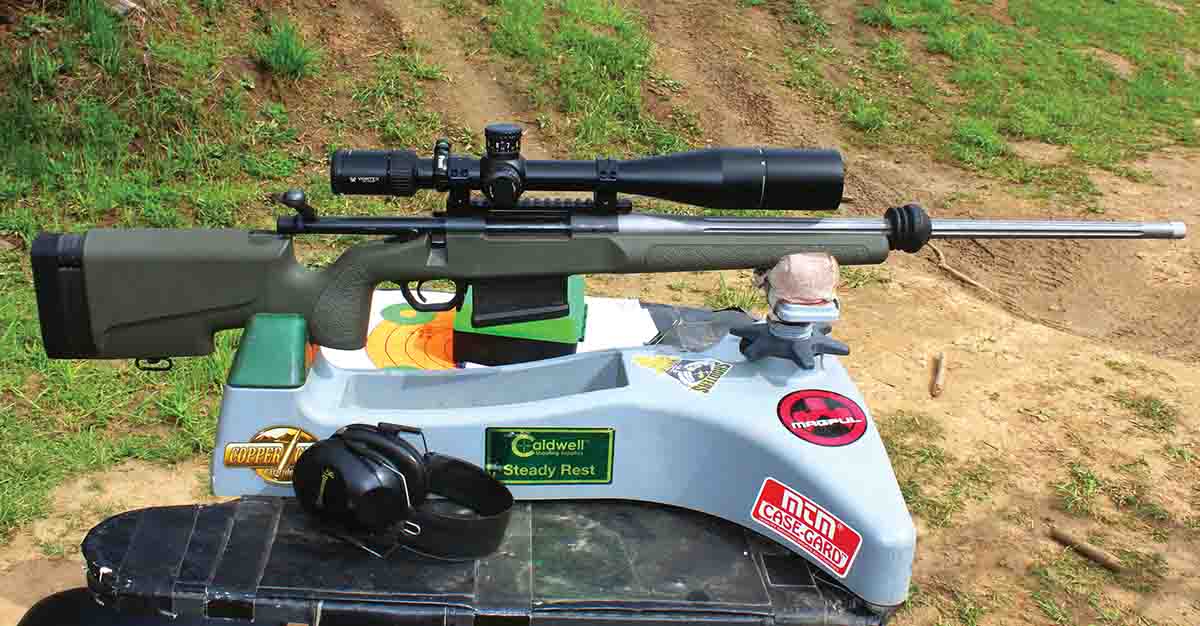
The 6mm “parts” rifle used for testing included a Remington 700 action, a Wilson 24-inch (1:9) fluted stainless barrel, a McMillan Mc3 stock, and a MagPul Magazine Well Kit and Timney Trigger.
Ken Waters, in a “Pet Loads” column from 1998, (
Handloader No. 194 August-September) expressed his desire to “prevent the untimely demise” of the 6mm Remington – a necked-down 7x57mm similar to RCBS founder Fred Huntington’s .243 Rockchucker, but with a slightly altered shoulder angle. Waters opined that the 6mm Remington was superior to the .243 Winchester in many ways, but had failed to gain the respect it rightly deserved.
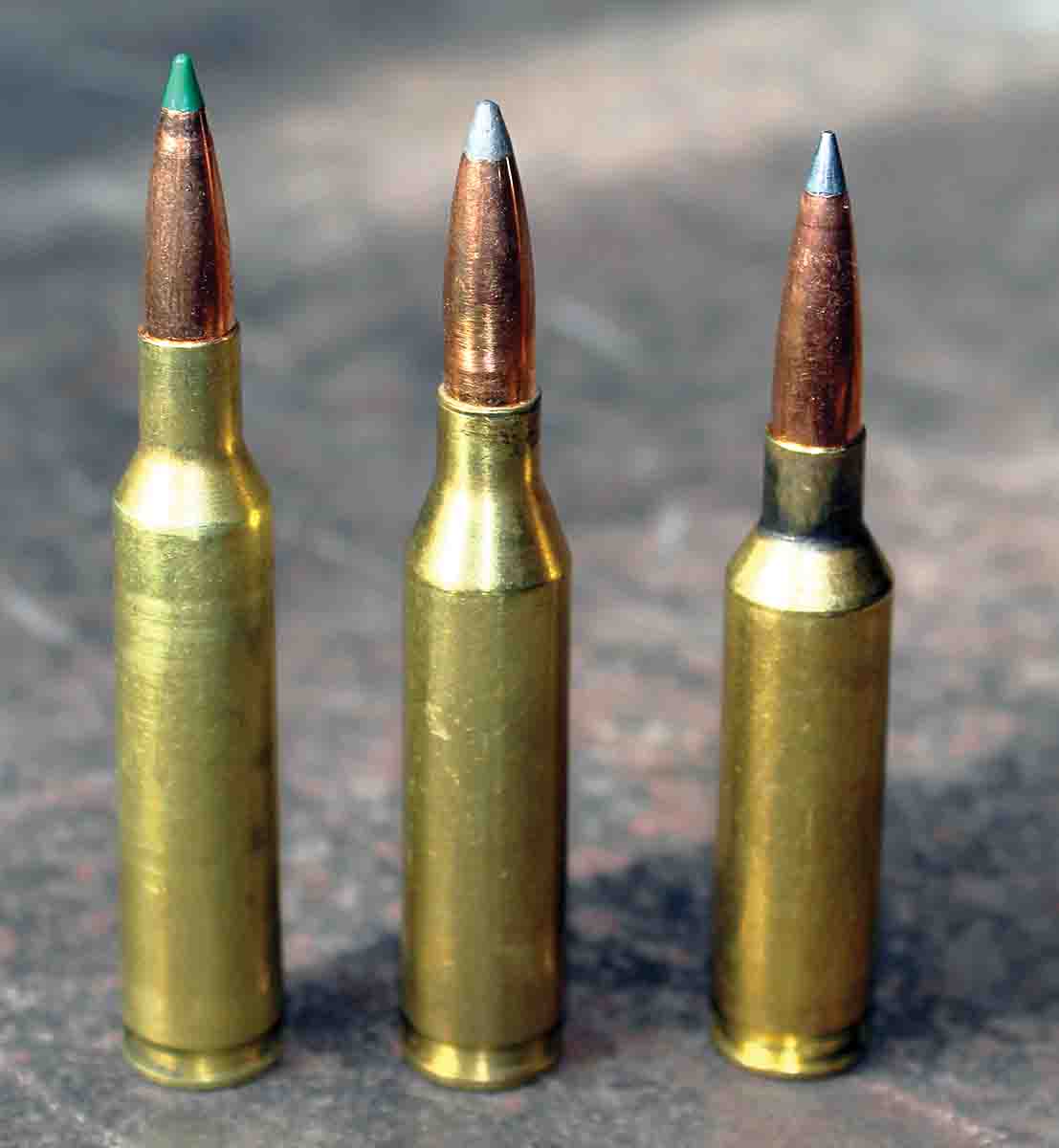
The 6mm Remington (left) is shown with the .243 Winchester (center) and the 6mm Creedmoor (right). The superior 6mm Remington lost the popularity contest to the .243 Winchester, with the 6mm Creedmoor positioned to overtake the .243.
Despite Waters’ appeal and esteemed standing in the firearms community, he failed to move the needle to any perceivable degree. If anything, the intervening 22 years have witnessed a further decline in the 6mm Remington’s popularity, with darned few factory rifles currently chambered for this exceptional cartridge. Steadfast fans of the 6mm Remington deal in vintage or custom rifles, or rebarrel a favorite action for the cartridge as I have.
The 6mm Remington story has been told many times – how Remington, upon its 1955 release, and envisioning the .244 Remington (its original label) as a long-range varmint
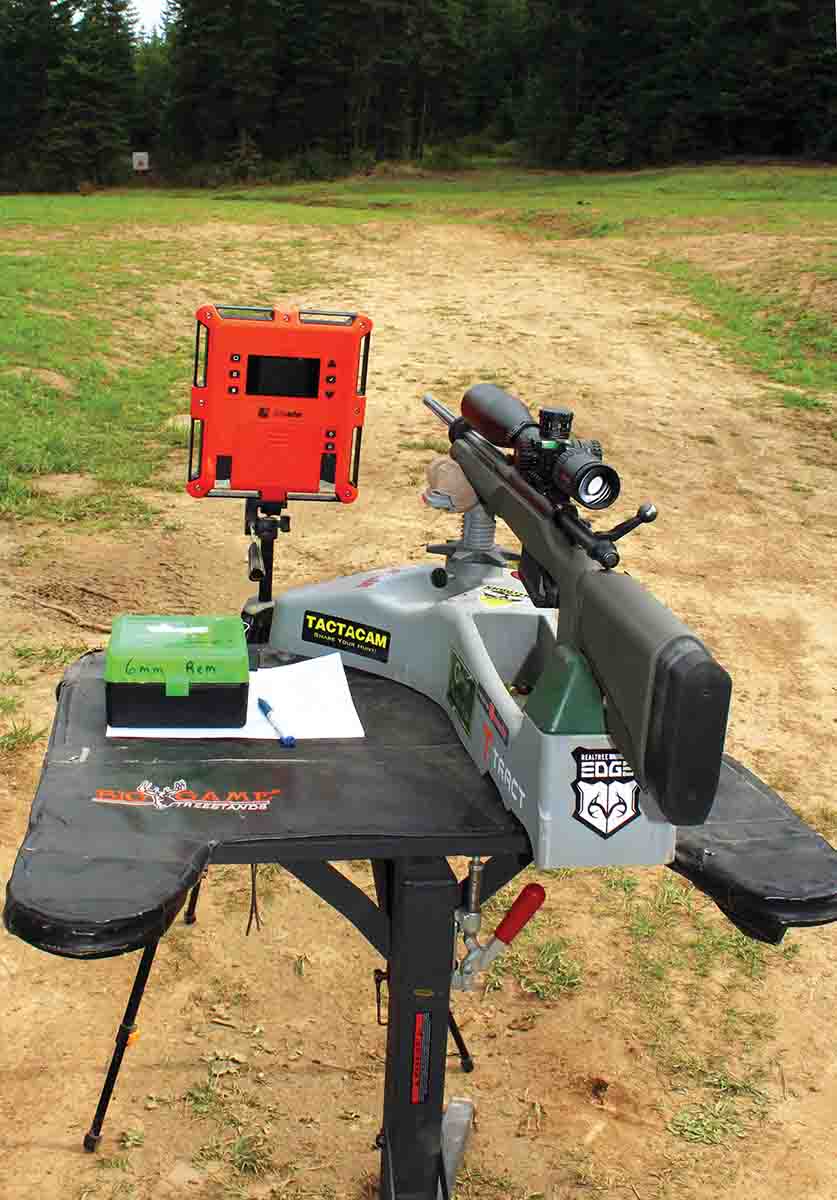
All load velocities were established using a LabRadar unit, which uses Doppler radar to track bullet velocity and therefore doesn’t require bright sunlight to operate.
round – added a 1:12 twist suitable for stabilizing only lighter bullets in those Model 722 rifles. (For the record, I have assembled tight groups from a 722 with classic cup-and-core 100-grain bullets.) The same year, Winchester introduced its .243 with a 1:10 twist, allowing it to reliably stabilize streamlined 100- to 105-grain bullets
![]()
better suited to big game, making it ideal for crossover varmint/deer-hunting duties for one-rifle owners. This gave Winchester a head start, despite the fact that Remington rectified the situation in 1963 by giving the .244 Remington a new 6mm Remington name and adding a 1:9 twist in newly-released Remington Model 700 rifles.
This allowed the 6mm Remington to do anything the .243 Winchester would do, but only better, including compatibility in short actions, a longer neck (.351 inch 6mm Remington versus .241 inch .243 Winchester) for more consistent bullet tension, a steeper 26-degree shoulder to reduce case stretching and allow more efficient powder consumption and an additional 150 to 200 fps velocity while maintaining equal accuracy. Anyone insisting the .243 Winchester is inherently more accurate than the 6mm Remington is simply repeating tired dogma gleaned from ancient reports. A four-percent increase in case capacity, that longer neck and 1:9 twist allowed seating long-for-caliber bullets over larger charges of slow-burning powders without intruding into powder space. That seemingly insignificant increase in velocity over the .243 Winchester translates into 4 to 5 inches less drop and a couple of inches less wind drift at 500 yards. The 6mm Remington also includes 65,000 psi maximum Sporting Arms and Ammunition Manufacturer’s Institute pressures over the .243’s 60,000 psi.
The Remington’s 1:9 twist is significant. After extensive testing while seeking extreme-range rockchuck loads, I’ve realized sub-half-MOA accuracy from my 6mm Remington with long-for-caliber match bullets as heavy as 105/107 grains, including some one-hole groups. My rifle was built specifically to address long-range rockchucks, but it also makes a deadly big-game rifle for anything from pronghorn to white-tailed deer and high country muleys. With the right bullet, I wouldn’t hesitate to hunt elk with this rifle, an attitude I understand won’t sit well with some readers, though I tagged my first three bull elk with well-placed Nosler Partitions from a .243 Winchester as a teen.
The test rifle’s action was robbed from a Remington Model 700 .25-06 Remington, the long action allowing seating long-for-caliber bullets without overrunning the magazine. A Wilson medium-contour, stainless steel barrel (fluted, 24 inches long and with a 1:9 twist) was added. The original synthetic stock was replaced by McMillan’s affordable Mc3 with adjustable length of pull and comb. It’s a solid design molded from proprietary Xenolite polymer and free of hollow voids. A MagPul Magazine Well Kit, MagPul detachable magazine and Timney Trigger complete the package. The barrel is threaded, but I used neither a muzzle brake nor a suppressor during this trial. In its role as a dedicated varmint rifle, it holds a Vortex Optics 15-60x 52mm Golden Eagle scope set in 30mm Weaver Grand Slam rings on a Precision Hardcore Gear 20 MOA Picatinny rail, bringing finished weight to a touch more than 12.5 pounds. If contemplating big game, a more reasonable scope would be added to shave weight to around 9.5 pounds.
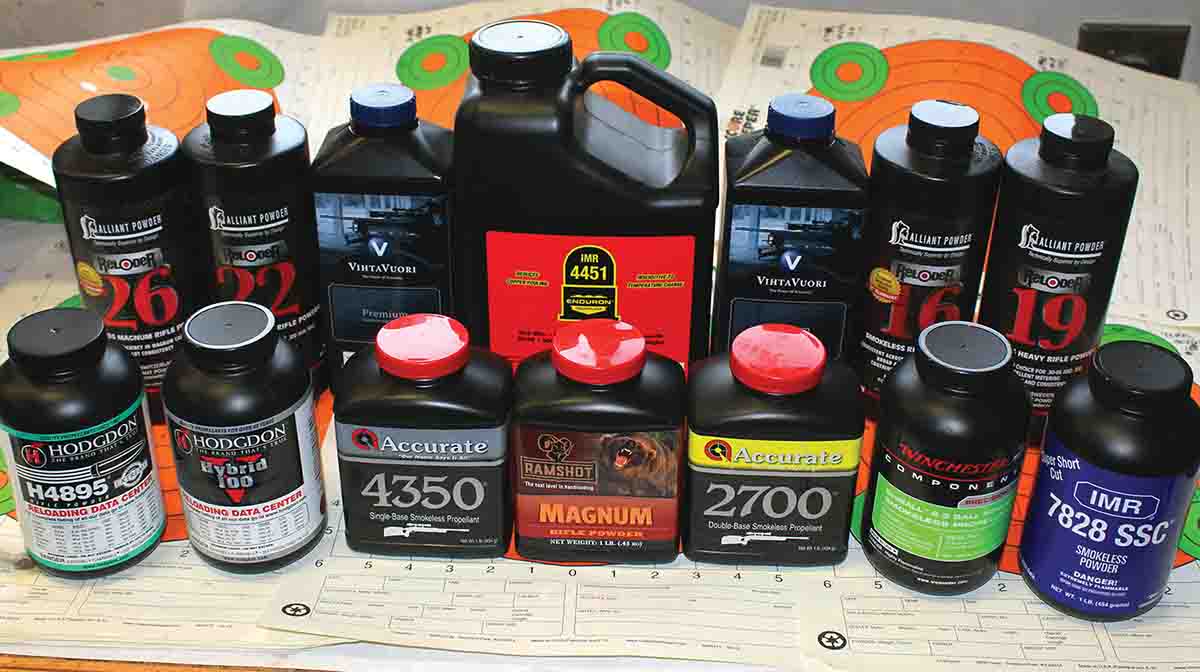
Several powders were included in this test.
I’ve used a vintage pawnshop set of RCBS reloading dies for as long as I’ve owned this rifle, and have produced plenty of handloads that cluster into small groups. Hornady brass that has now survived five loadings and trimmings, and Federal Premium GM210M Large Rifle Match primers, were used for all accompanying loads. All charges were hand trickled onto an RCBS beam scale. Unlike most of the varmint load development I’ve conducted for this 6mm Remington, I would be testing true big-game bullets weighing from 88 to 103 grains. Every effort was made to sample newer powders providing greater temperature stability and/or including decoppering agents.
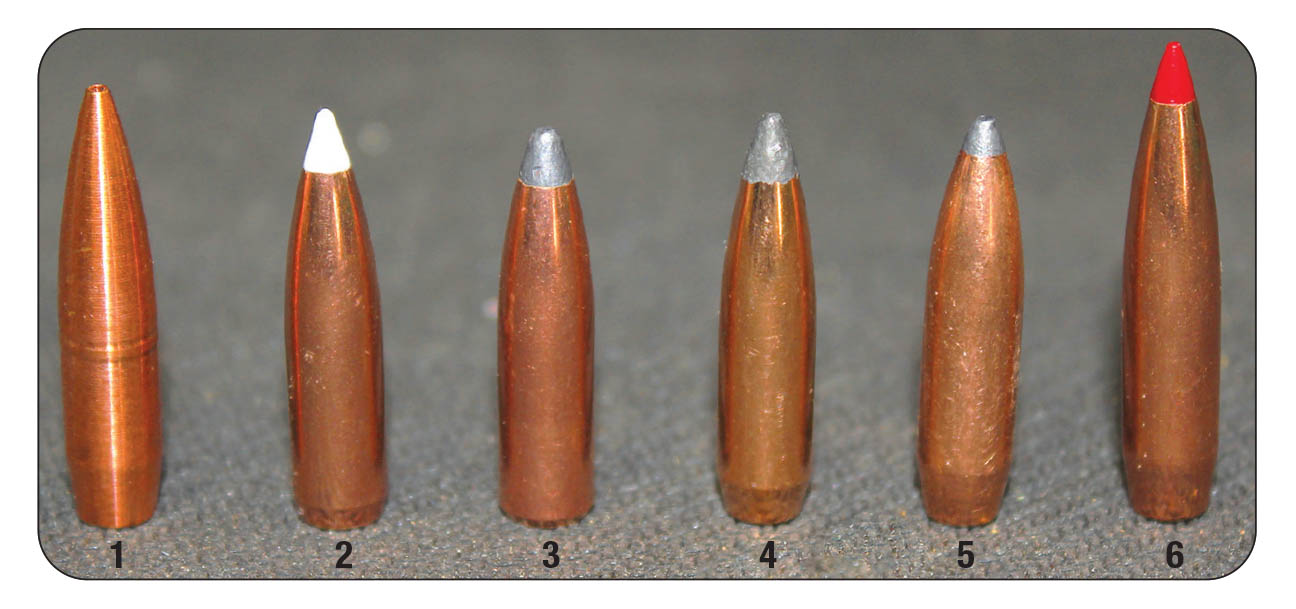
Big-game bullets used for testing included: (1) Cutting Edge 88-grain MTH, (2) Nosler 90 AccuBond, (3) Nosler 95 Partition, (4) Speer 100 BTSP, (5) Sierra 100 GameKing SBT, (6) Hornady 103-grain ELD-X.
Cutting Edge Bullet’s 88-grain MTH (Match/Target/Hunting) is a long-for-weight monolithic design milled from pure copper, which makes it legal in areas where lead-free bullets are required, like California. The design includes a hollowpoint that causes the nose to break off into four sharp-edged petals to inflict maximum soft-tissue damage, as the base pushes through for deep penetration. With a ballistic coefficient (BC) of .445, it retains energy and bucks wind well at extended ranges. It might be considered a prairie pronghorn or Southwest Coues’ whitetail ideal – light-framed, thin-skinned big game often shot at ranges outside 300 yards. This
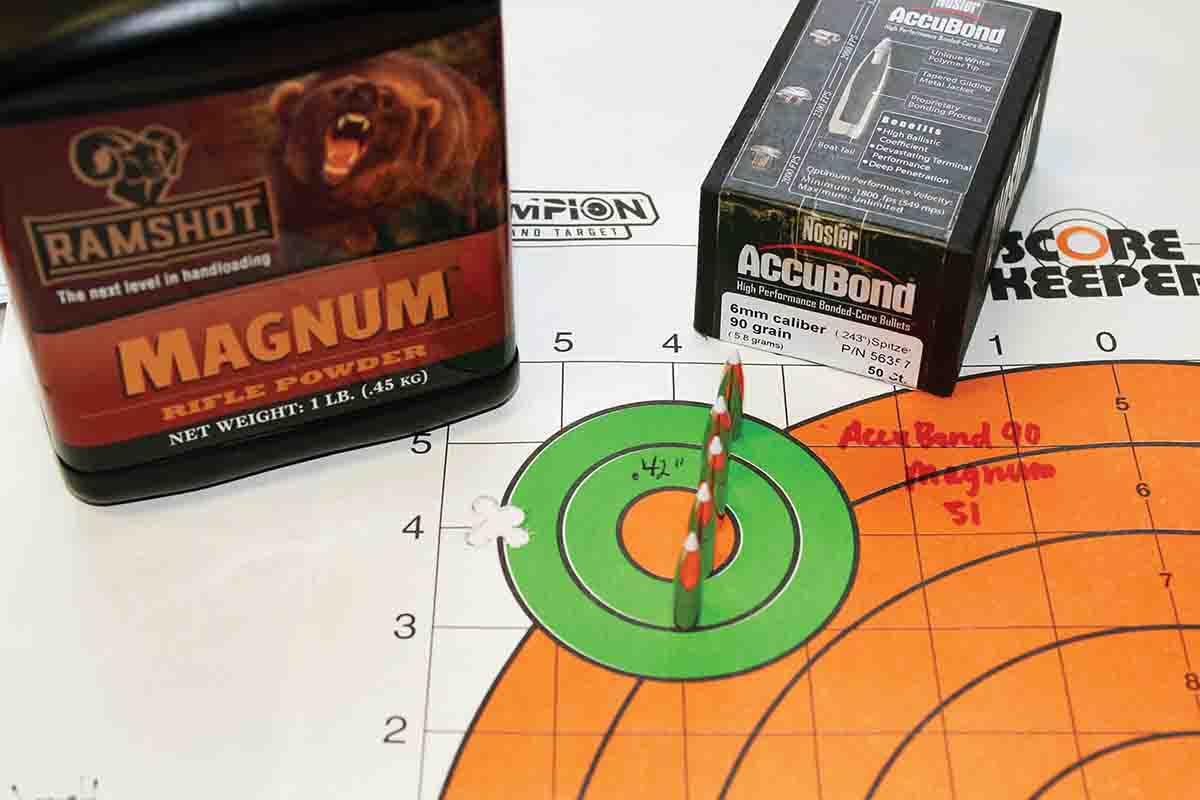
Nosler’s 90-grain AccuBond seated over 51 grains of Western Powders’ Magnum produced this .42-inch, five-shot 100-yard group.
bullet paired especially well with Accurate 4350, with 47.5 grains pushing these bullets to 3,344 fps and producing a .51-inch five-shot, 100-yard group. Pushing velocity to 3,400 fps opened that group another .13 inch, but it is a load that drops only 20.3 inches at 500 yards with a 200-yard zero. A near-maximum load of 45 grains of Alliant Reloder 16 at 3,375 fps showed great promise, just missing half-MOA accuracy, while Vihtavuori N160 printed groups around an inch with all charges.
Nosler’s 90-grain AccuBond includes a tapered copper jacket and proprietary core-bonding process to assure ample expansion combined with deep penetration. It
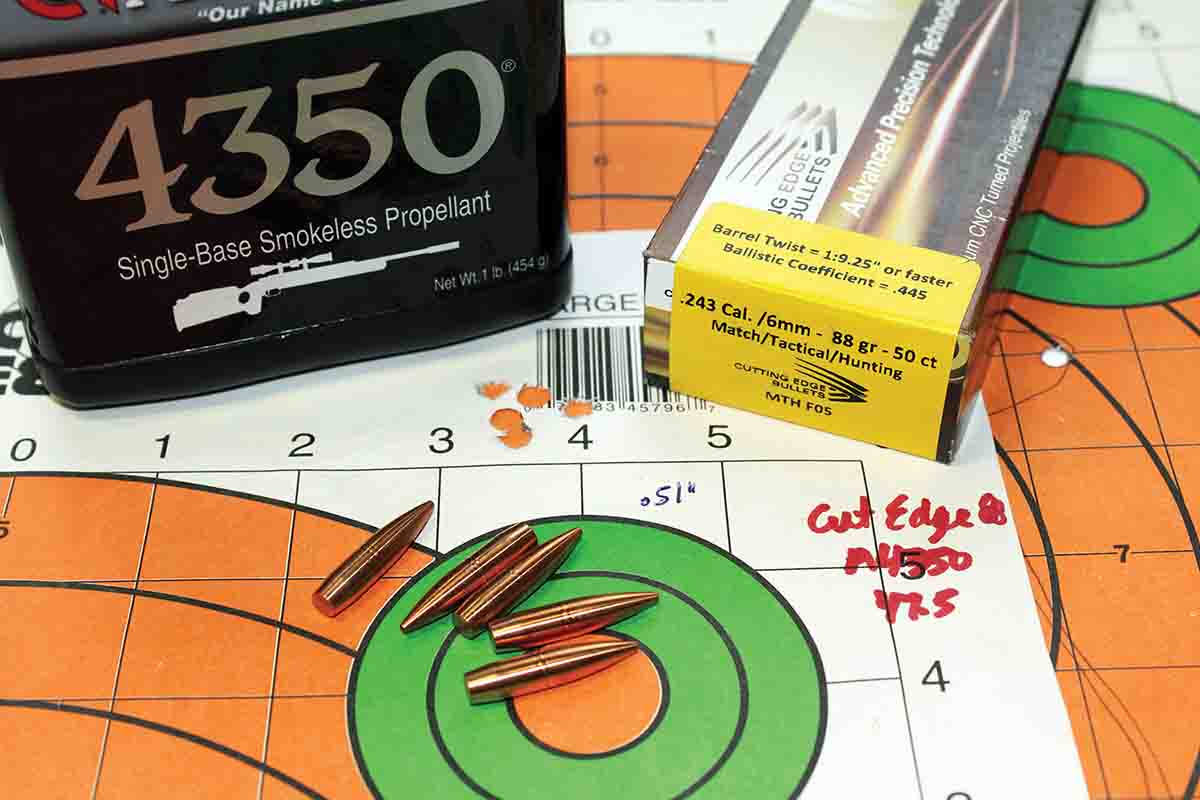
Cutting Edge 88-grain MTH bullets seated over 47.5 grains of Accurate 4350 produced a .51-inch, five-shot 100-yard group.
will expand at velocities as low as 1,800 fps, making it a suitable bullet with a BC of .376. AccuBond bullets have proven exceptionally accurate out of a couple of my hunting rifles. The standout load with this bullet and 51 grains of Ramshot Magnum produced a .42-inch group combined with a velocity of 3,165 fps. Hodgdon H-4895 and Hybrid 100V, and heavier Magnum loads, all produced groups surrounding an inch, making all of them big-game ready.
Nosler’s 95-grain Partition includes the original tapered-jacket, dual-core design that checks expansion at an internal cross-strut while allowing the softpoint nose to curl back in a beautiful mushroom. The design allows these bullets to retain two-thirds of start weight or hold together after major bone is encountered. The 95-grain version (.365 BC) is ideal for larger-bodied deer and black bear, generating a tad more speed, flatter trajectories and similar terminal performance as its 6mm 100-grain (.385 BC) counterpart (the bullet I tagged my first three elk with). As a big-game bullet, I generally don’t expect match-grade accuracy from Partitions, but 44 grains of Alliant Reloder 19 proved me wrong, grouping into .38 inch at 2,964 fps. The remaining loads, including lighter charges of Reloder 19, IMR-7828ssc and IMR-5541 Enduron, produced groups hovering around an inch, making every one of them suitable for deer-hunting duties. Based on energy alone, a near-maximum load of 46.5 grains of IMR-4451 pushing this bullet to 3,355 fps and producing a sub-MOA group, generates a notable 2,374 foot-pounds of energy.
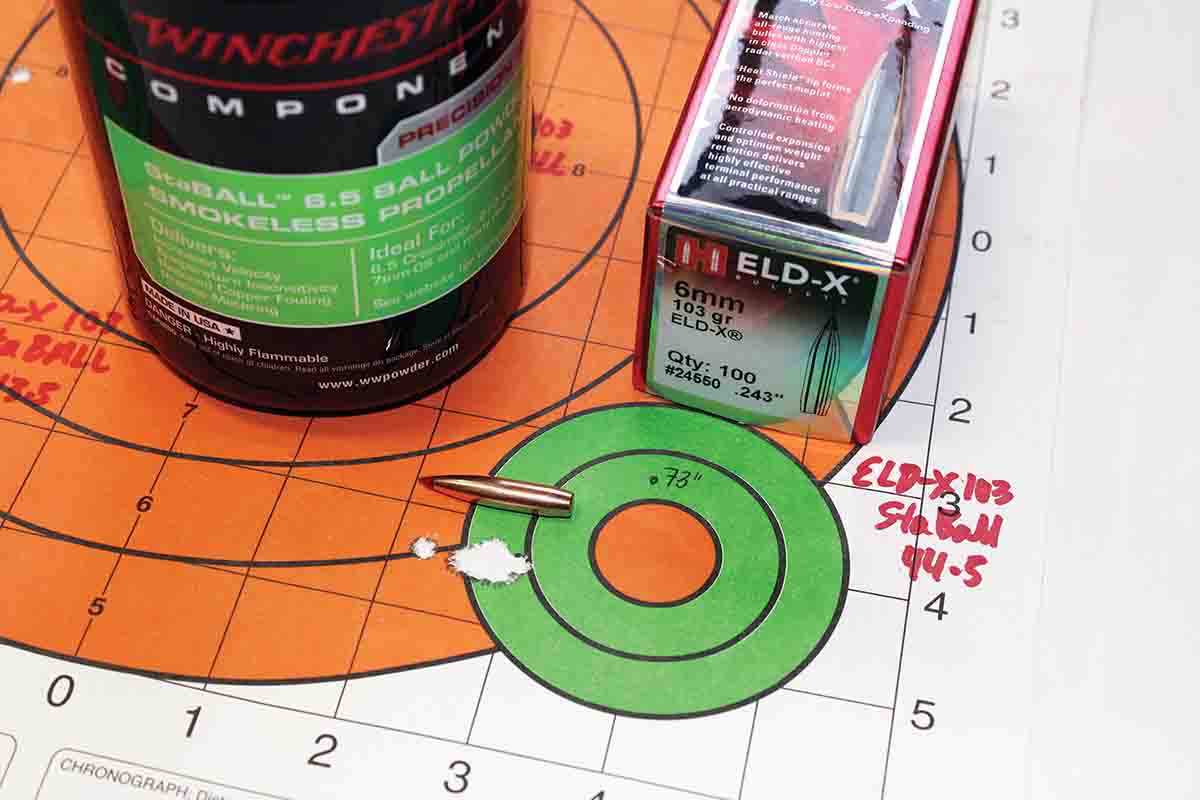
In the past, Patrick’s 6mm Remington hasn’t cared for Hornady’s 103-grain ELD-X bullet. A 44.5-grain charge of StaBALL 6.5 produced a .73-inch, five-shot group, which included a flier. The load is big-game ready.
The 100-grain Speer boat-tail softpoint is a classic cup-and-core design with an impressive .446 BC that delivers consistent accuracy. The lead core is neither bonded nor crimped, resulting in aggressive expansion on impact, but also dumping a high percentage of energy into the vitals on deer, pronghorn or hogs. Those virtues make it a poor choice for even smaller cow elk. This bullet provided sub-MOA groups with Alliant Reloder 22, RL-26 and Vihtavuori N165 in all charge weights. The best group, .77 inch at 3,113 fps, resulted from a compressed load of 49.5 grains of VV-N165. With a 200-yard zero, that’s a load that drops only 3.9 inches at 300, 10.8 at 400 and 20.9 at 500 yards.
Sierra’s 100-grain GameKing SBT was a favorite big-game bullet as far back as my .243 Winchester days, because it includes a heavy, double-tapered jacket for reliable terminal performance, a boat-tail profile and a .430 BC for long-range energy retention and a high degree of accuracy with the right load combination. This was my bullet of choice for burly mountain muleys or mature black bears. While this bullet provided a couple conspicuously smaller groups than the Speer
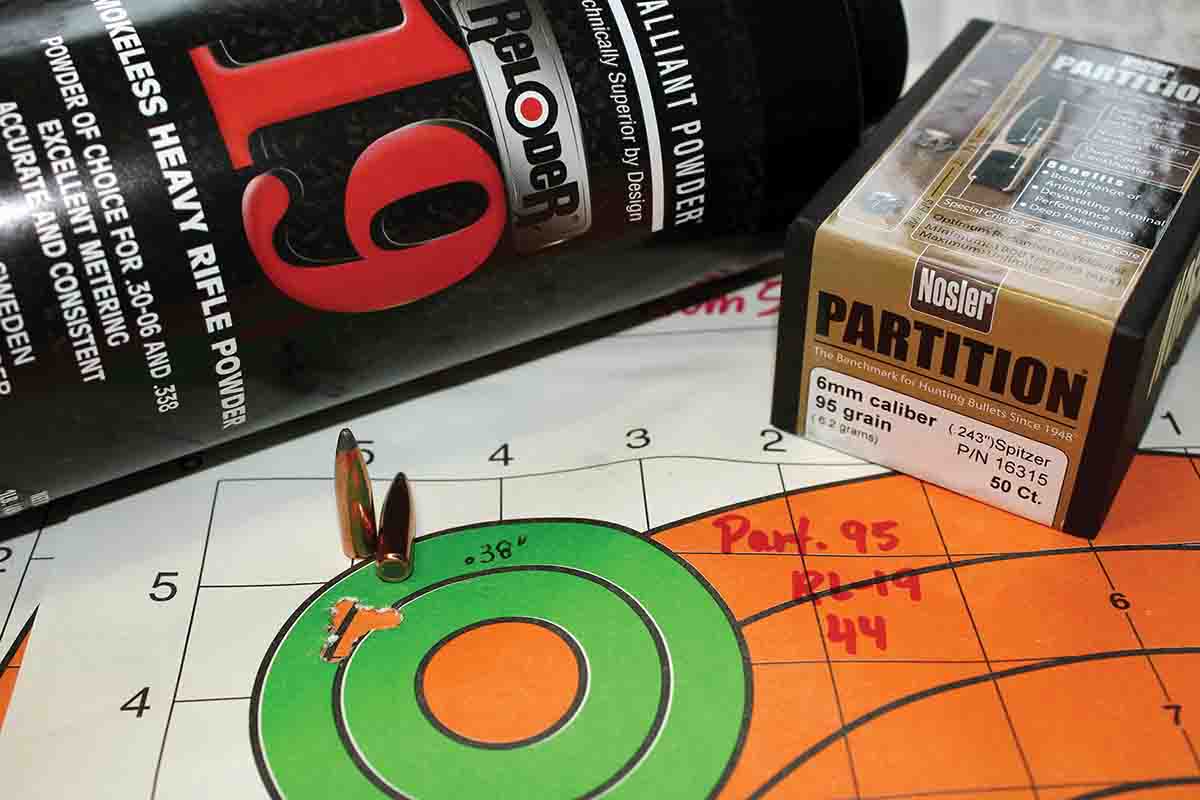
The best group of this test, .38 inch, resulted from a Nosler 95-grain Partition seated over 44 grains of Alliant Reloder 19 for 2,964 fps.
BTSP, it also proved much fussier, meaning it also provided some much larger groups. The best group resulted from 44 grains of Alliant Reloder 19 – .44 inch at 2,936 fps. Newer temperature-stable, TZ Technology-equipped Reloder 16 (my go-to 6mm Creedmoor powder) produced a .54-inch group with a near maximum 43.5 grains at 3,056 fps.
The 103-grain ELD-X from Hornady includes an incredible .512 BC (one of the highest in 6mm that will stabilize from a 1:9 twist) for downrange energy retention. The thick-shank jacket and InterLock internal ring help the bullet retain 50 to 60 percent of start weight from high-velocity cartridges inside 400 yards, and 85 to 90 percent beyond 400 yards, assuring penetration. I’ve experimented with this bullet in the past and determined my rifle just doesn’t care for it, as it certainly shoots heavier/longer high-BC bullets quite well. The typical outcome is three or four bullets in a tight cluster, spoiled by a flier or two, even with different bullet lots. (Understand though, all
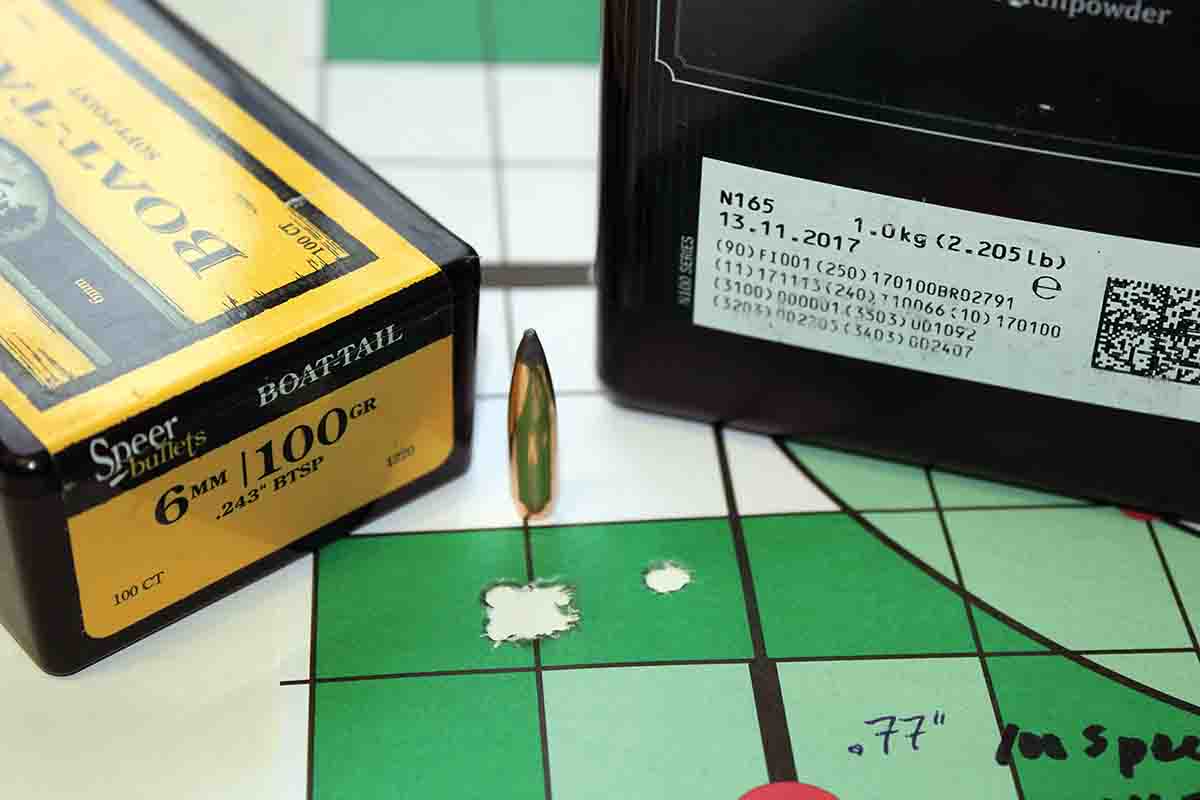
All loads tested with Speer’s 100-grain boat-tail softpoint grouped into less than an inch. The best was a .77-inch group with a single flier. A 49.5-grain charge of Vihtavuori N165 did the trick.
groups are big-game ready at ranges less than 400 yards.) The same bullets assemble one-hole groups from my Ruger Precision Rifle chambered in 6mm Creedmoor. I decided to try some new powders to see if results differed, as I like the idea of this bullet for western mountain hunting. Results remained much the same, small groups ruined by fliers, though new Winchester StaBALL 6.5 and Alliant Reloder 22 did show improved potential. A charge of 44.5 grains of StaBALL provided a .73-inch group at 2,879 fps, and 47.5 grains of Reloder 22 resulted in a .71-inch group at 3,204 fps. Of course, results in your rifle may vary.
The 6mm Remington offers superior ballistic coefficients in same-weight bullets than the .257 Roberts, the latter also offering equal velocities only through +P loads. Admittedly, for the average eastern whitetail hunter operating from a treestand or blind and rarely shooting beyond 150 yards, this means very little. Yet, for the western pronghorn, mountain muley, plains or Coues’ whitetail hunter who often shoots at ranges requiring a laser rangefinder, the 6mm Remington offers a distinct advantage. The 6mm caliber also provides a much greater variety of bullet options.
Like the .243 Winchester that won the 6mm popularity contest, the 6mm Remington is a highly-versatile cartridge ready for nearly any task; from varmints to deer, and even larger black bears and elk with a stout, controlled-expansion bullet and careful shot placement. Yet everything the .243 Winchester can do, the 6mm Remington will do just a touch better. It shoots just a bit flatter and hits a tad harder.
I hold an enduring fondness for the .243 Winchester, having tagged my first couple dozen big-game animals with one – pronghorn, mule deer, black bears and even elk – before I could reliably cultivate a see-through moustache. Today, I own and hunt with a 6mm Remington, as sentiments count for nothing when dealing with the serious business of taking game.












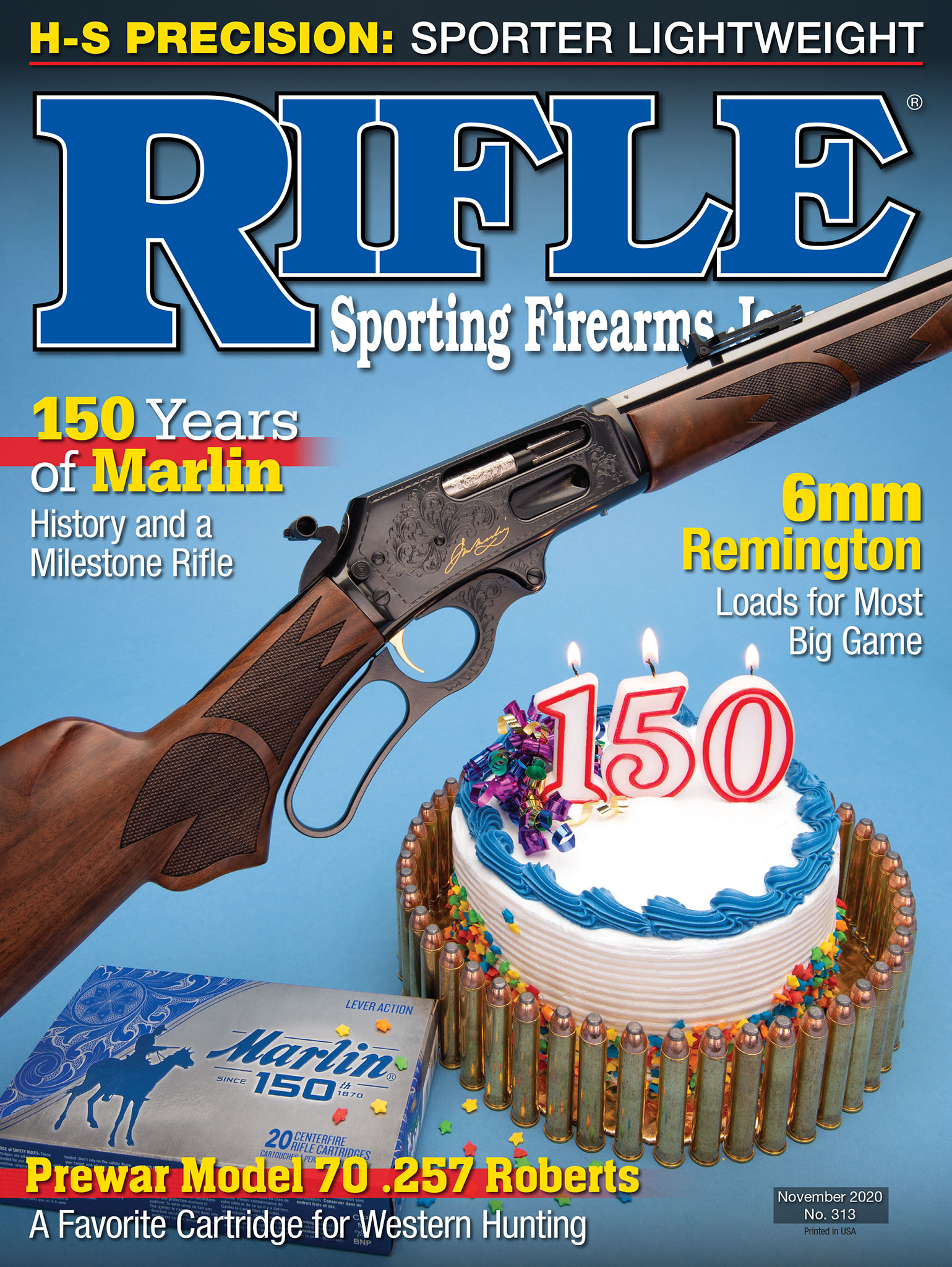
.jpg)